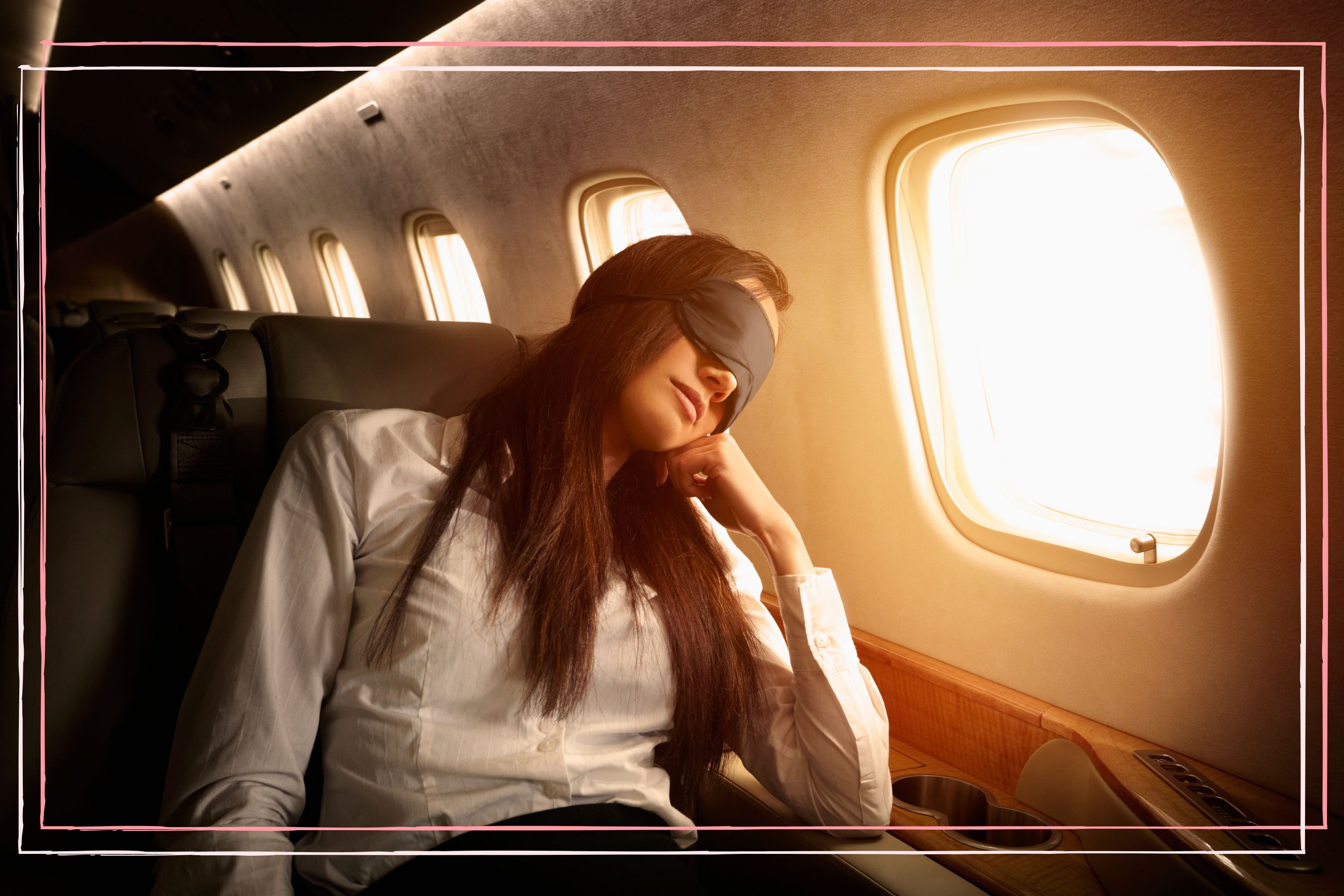
We asked the experts how to sleep on a plane with kids, so you can beat jet lag and arrive well-rested on your next trip.
Planning a family holiday is no small task. There's all the kit you need to get hold of, from travel strollers and cots to toys and games to keep the kids entertained, and a long journey to plan - which probably involves time researching how to find cheap flights and how to sit together on a flight too. And if that journey involves a long-haul flight, you're probably wondering how on earth you're going to get any rest in a cramped seat with constant noise - let alone how to get the kids to nod off too.
As Alison Johnson, owner of Moving To Spain, says, "Travelling with babies, toddlers, and children can be a challenge, but with proper sleep management, it can become a more enjoyable experience for the whole family. Remember, every child is unique, so finding the strategies that work best may require some trial and error, but by implementing these tips and adapting them to your child's preferences, you can increase the chances of a restful and comfortable sleep on the plane for both you and your little one." We've spoken to Alison and other experts to put together this list of tips to help you and your kids get to sleep on a plane...
How to sleep on a flight: 14 expert tips
1. Plan your flight time
There are a number of things you can do while booking your flight that will increase your chance of being able to sleep on the plane, and one of those is selecting a flight that travels overnight.
Alison says, "Choose overnight or early morning flights to align with your child's natural sleep schedule, as this can increase the chances of them falling asleep easily on the plane." And therefore, you might be able to get some rest too. She adds, "Avoid the common mistake of not letting your children run free inside the airport before a flight and allow them to burn off energy to reduce restlessness."
2. Book the right seats
It's no always possible to select your seats in advance without paying a fee, but if you are able to it could provide the key to getting some rest while you're up in the clouds.
Martin Seeley, CEO and sleep expert at MattressNextDay, explains, "Firstly, you should avoid the toilets as that’s where people tend to chat, and instead pick a seat in the same row as the wing. Not only is this likely to be the quietest area but as the wing is usually where the emergency exit is based, you’ll have more legroom."
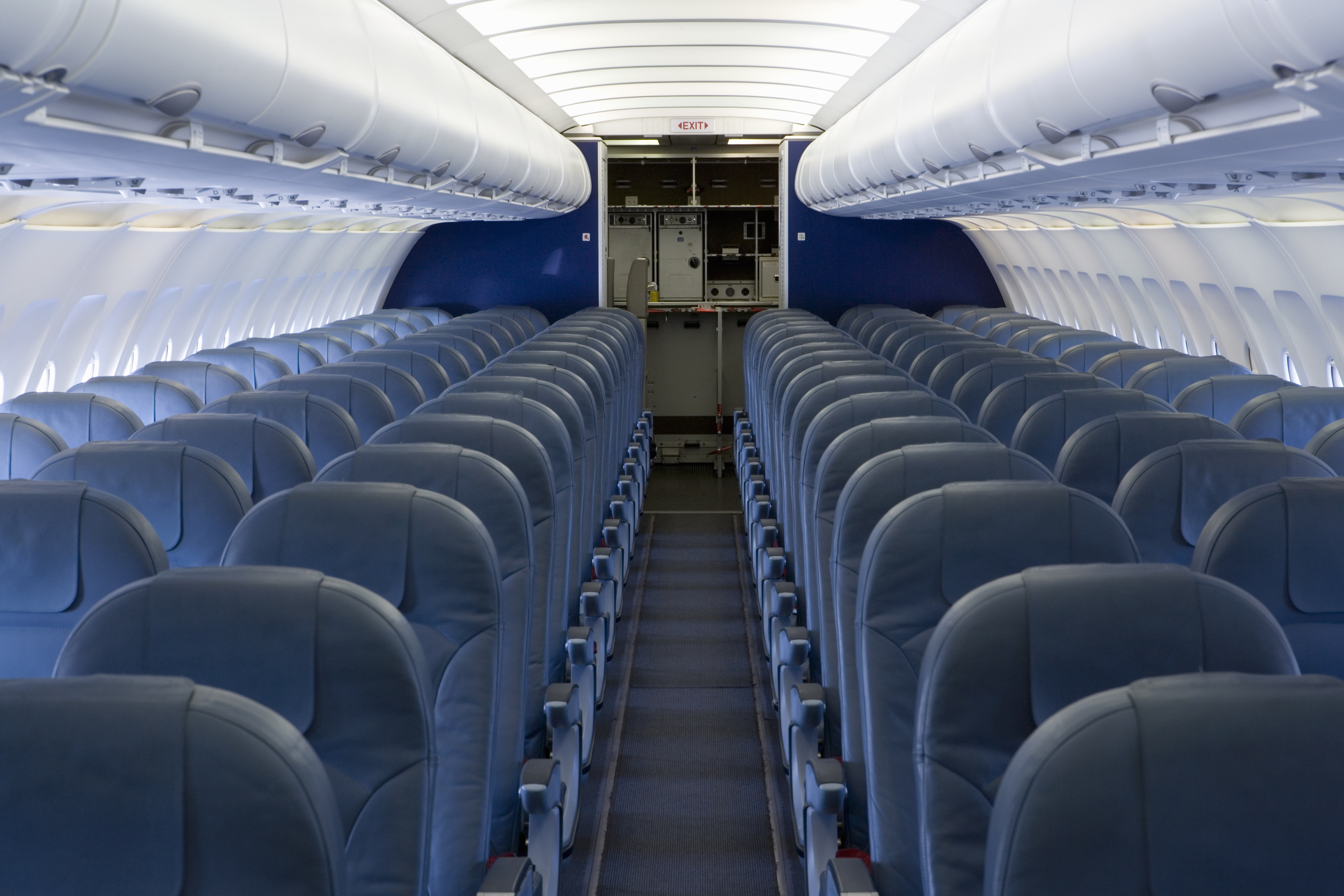
Alison adds that if you're travelling with an infant on a long-haul flight, you can request a bassinet in advance to provide them with a comfortable sleeping space.
If you don't have the luxury of choice when it comes to selecting your seats, the experts at Bed Kingdom have shared how you can get some sleep in any seat on a plane:
- Window seat: Whenever possible, select a window seat for your flight as it provides a solid surface to lean against while sleeping and gives you control over the window shade, allowing you to create a darker environment.
- Middle seat: Sleeping in a middle seat can be more challenging due to the limited space available. Make sure to store all your belongings in the overhead locker to give yourself as much legroom as possible. When sitting in the middle seat, plane etiquette says you get both armrests, so make sure to board early and claim your space as soon as you’re seated.
- Aisle seat: If you are sleeping in an aisle seat, make sure to utilise the aisle armrest. Since you have easy access to the aisle, you can use the aisle armrest as additional support for your head or upper body when sleeping.
3. Bring comfort items
Bringing items that you often sleep with at home can help you doze off, and this is supported by a study from the Association for Psychological Science, which found that sleeping with something that smelled of a loved one improved participants' sleep.
Alison suggests, "Pack familiar comfort items from home, such as a cosy blanket, a favourite stuffed toy, or a special pillow for your child. These items can provide a sense of familiarity and help your child feel more secure and relaxed during the flight."
4. Dress in comfortable clothes
It's no secret that planes are not comfortable places to sleep. You're usually jammed into a small space with little legroom, and often the temperature can make it difficult to drift off too.
By wearing loose, comfortable clothes and dressing in layers you can adjust your outfit to the temperature of the plane, and help get some rest. Alsion adds, "Don’t forget to pack a change of clothes for your little one, and consider bringing their pyjamas to establish a better sleep routine. "
5. Take a walk around the terminal
If you're planning on going to sleep on your flight, it's a good idea to tire yourself and your kids out before you get on the plane.
One study in the Journal of Sleep Health found that participants who took more steps reported improved sleep and more time spent asleep, while a separate study in the Sports Medicine Journal found that moderate exercise completed more than one hour before bed had a positive effect on sleep
For this reason, Martin Seeley suggests, "Before you board, spend 30 minutes walking around the airport, duty-free or even in the lounge."
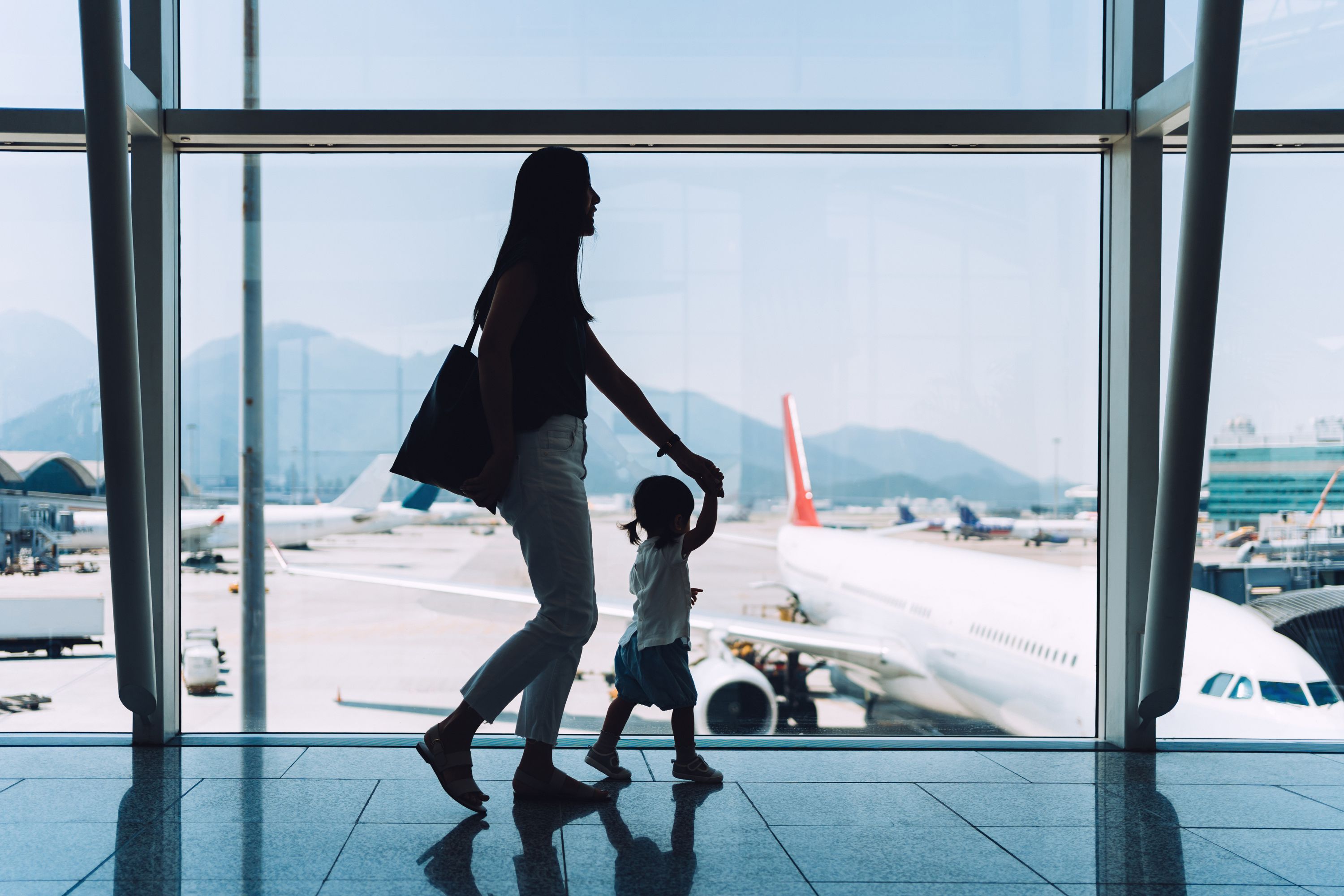
6. Avoid alcohol
This is one for the parents, because it turns out alcohol doesn't actually help you get to sleep on a plane. While it can be tempting to have an alcoholic drink - either to celebrate your holiday or help you feel relaxed - alcohol will leave you feeling groggy after the journey is over.
Martin explains: "If you are looking to sleep on a plane, always opt for water instead of alcohol. While it may make it easier for you to drift off, alcohol actually disrupts your sleep and lowers the quality – making you more tired in the morning."
7. Download white noise
White noise is a steady, continuous sound that blocks out other noises and often sounds like like a hissing, whooshing or static. It can be one of the best sleep aids for babies, but did you know it can help adults drift off to sleep too?
Martin says: "White noise has long been tipped as a help for those who struggle to sleep or suffer with insomnia. In fact, a study in the Journal of Sleep Medicine found that white noise helped improved sleep for those who experience difficulty sleeping due to environmental noise."
You could download a white noise playlist to your phone from apps like Spotify, or you can even turn your iPhone into a white noise machine in a few easy steps.
8. Establish a sleep routine
Stick to your family's normal bedtime routine to help everyone feel ready to drift off.
Alison advises, "Create a calming pre-sleep routine that signals to your child that it's time to rest; be sure your child is well fed before starting a sleep time routine, power down your devices, then include activities like reading a bedtime story, or engaging in quiet play before settling down."
Martin adds: "You can go to the bathroom to brush your child's teeth and change them into their pyjamas, so they know that it is time to sleep."
9. Invest in travel accessories
Putting together a sleeping kit before you set off can help to make sure you and your kids feel comfortable enough to sleep while you're on the flight. These could include:
- Inflatable footrests for children
- Travel pillows
- Blankets
- Eye masks
- Noise cancelling headphones or ear plugs
- Thick socks
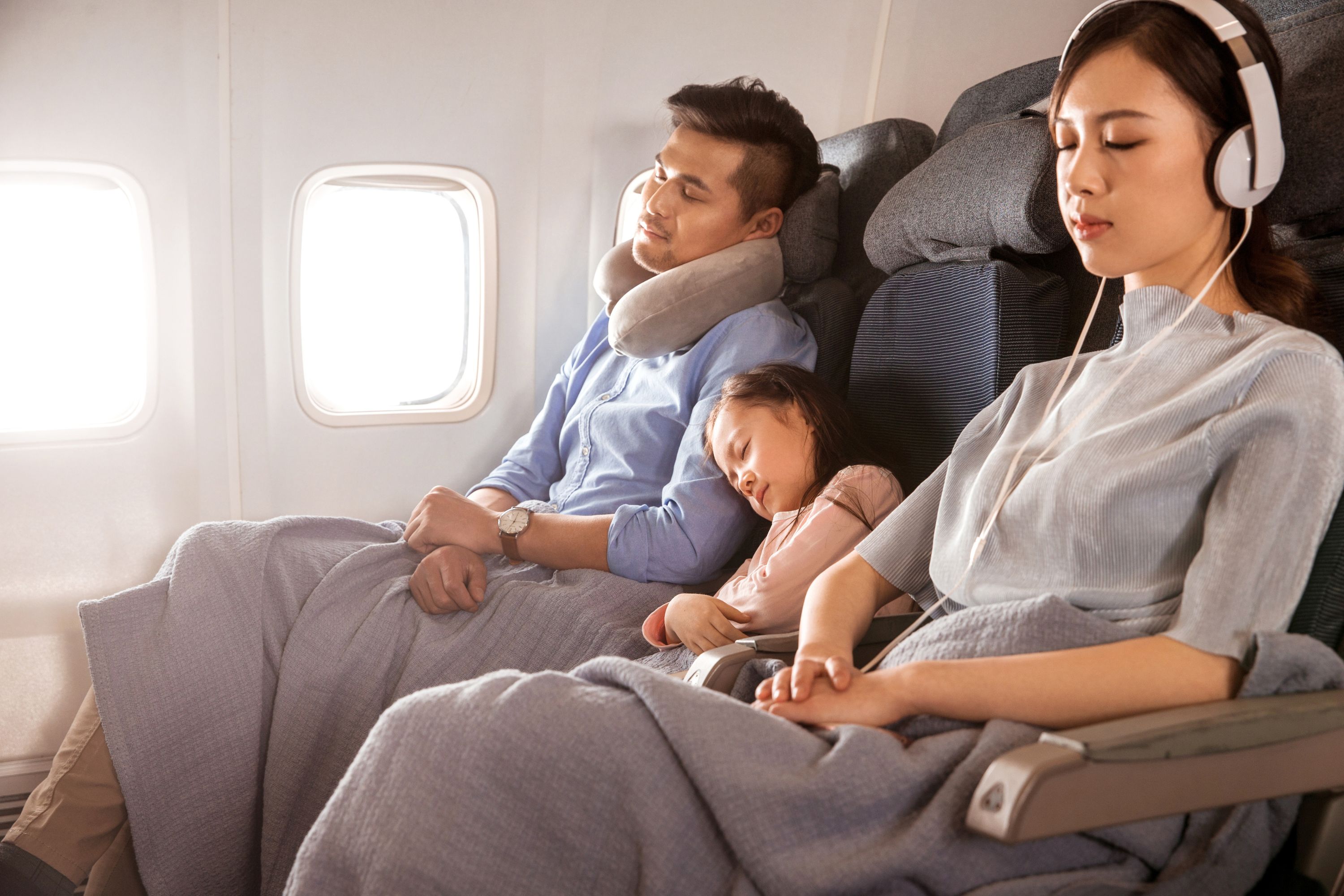
The aircon on a plane can get cold and wearing socks can actually stop you from waking up if you are a light sleeper. A study in the Journal of Physiological Anthropology found that participants who kept their feet warm by wearing socks had better sleep quality, were able to get to sleep faster, slept for longer and woke up less during the night.
Martin adds, "A travel pillow will also help you support your neck and sleep upright. The best are those that are made of soft memory foam as they can mould around the shape of your neck, but if you don’t have one or have limited carry-on space, wrapping a blanket or scarf around your neck can help with sleep support."
10. Stay hydrated
Dehydration can make it harder to get to sleep and worsen the effects of jet lag, so try to drink plenty of water - and this is especially important while you're in the air.
Martin explains: "If you’ve ever had a scratchy throat on a plane, that’s because the air is notoriously dry in the cabin. This can make it harder to fall asleep, therefore, drinking water before and throughout your flight will not only alleviate these problems but make it easier for you to fall asleep."
Consider taking a refillable water bottle on the flight with you, so you don't have to wait for a flight attendant to come by before you have a drink.
11. Fasten your seatbelt
Fastening your seatbelt isn't only important for safety reasons, but it can also prevent you from being disturbed during the flight.
Alison says, "Prioritise the safety of both yourself and your child by ensuring that you are always fastened with your seatbelt during the flight. By doing so, you can rest comfortably without the need to wake up and fasten your seatbelt during turbulence or unexpected movements."
Make sure you fasten the seatbelt above your blanket if you're using one, so the flight attendant can see it when they walk past.
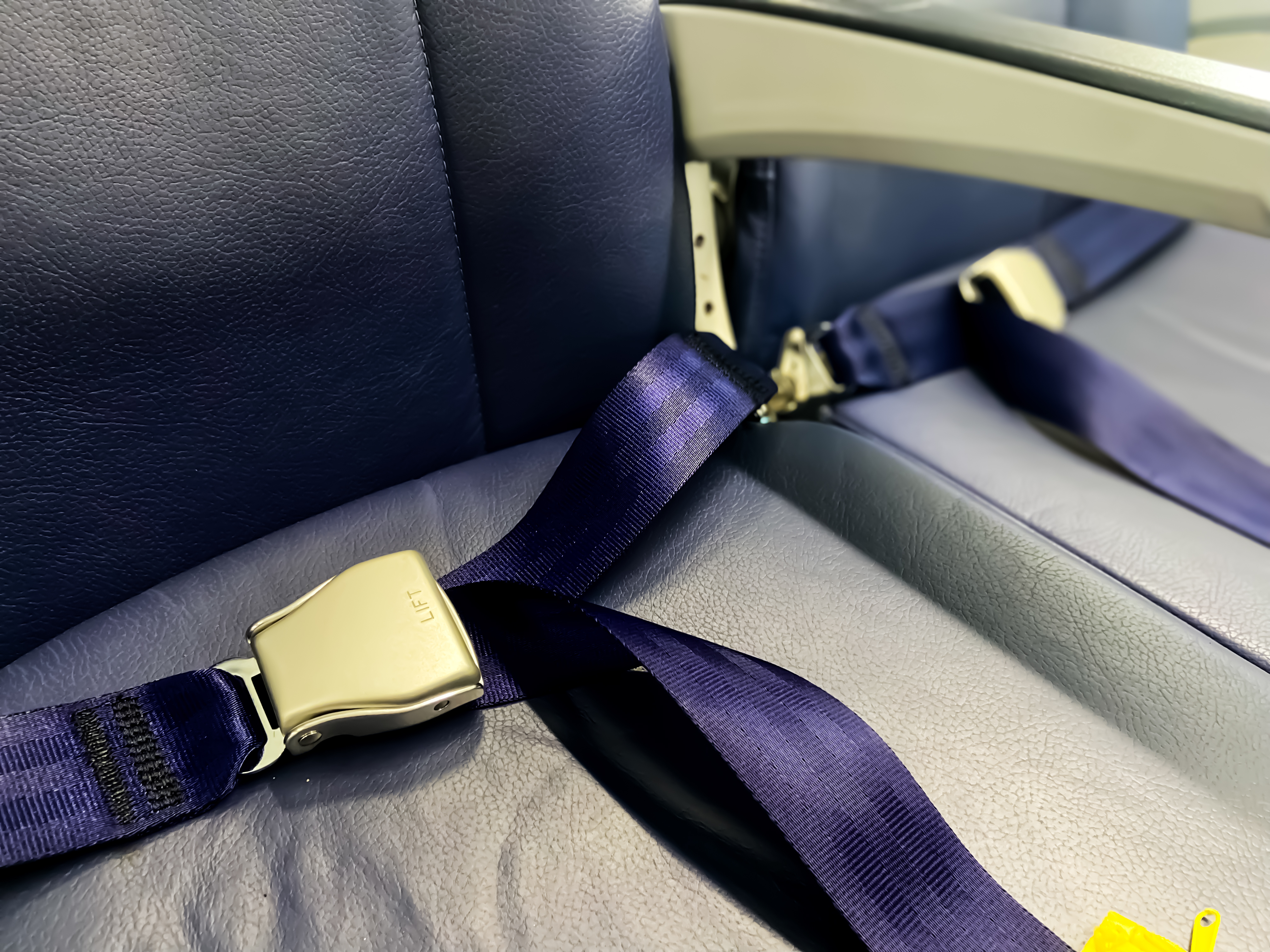
12. Board last
If you're unhappy with the seats you've been allocated, then try to hang back and board last, as you may be able to get some extra room.
Martin says, "Another hack for getting a good seat for sleep is to hold back at the airport gate until everyone has boarded. If you’re the last one to board the plane, you can see where the empty seats are and pick a row that has two or three empty seats – allowing you to spread out."
You'll need to be on a flight that isn't full for this to work, but if you ask the airline staff at the boarding gate they may be able to tell you this.
13. Find out what time food will be served
Marin says, "When the plane is in the air and the seatbelt sign is off, ask the flight attendants when the food will be served. This way, you can time your sleep around the food and ensure you are not disturbed by the service."
There's nothing worse than being worked up by people turning on their lights and putting their tray tables down as they start to eat. If the meal is being served early on in your flight then you could weigh up whether you want to hold off trying to sleep until after you've eaten.
14. Watch what you eat
Chances are if you're travelling with kids then you're probably planning on taking some snacks with you for the journey. If this is the case, make sure you're packing some foods for sleep.
Opt for foods that are rich in tryptophan - an amino acid that aids the production of serotonin to regulate sleep - such as whole grains, kiwi, honey, dark chocolate, and yoghurt.
Cherries are also a great food to help you sleep, as they naturally boost the body's supply of melatonin, a hormone that is produced naturally in your body and aids sleep. A study in the European Journal of Nutrition found that drinking tart cherry juice significantly improved sleep.

How to help children fall asleep on a plane
Getting children to sleep on planes can be challenging and while there are no guarantees, you can take steps to help prepare for a smooth flight for your family.
The experts at Bed Kingdom shared the following tips:
- Pack their favourite sleep aids - Familiar items can provide a sense of security and comfort, so don’t forget to pack their favourite cuddly toys, blanket or pillow to create a normal sleep-friendly environment.
- Block out the light - To aid your child in falling and staying asleep, try to block out the light and distractions as much as possible. For instance, use a blanket to cover the window by your child's seat.
- Burn their energy before the flight - One of the best ways to get your child to sleep on the plane is to make sure they burn all their energy before you board. Let them run around in an uncrowded area or take them for a long walk around the airport to help them drift off quicker on the flight.
- Feed your kids within the first hour of the flight - Make sure you are prepared with plenty of snacks to keep your kids fed and happy on the plane. Avoid sugary treats, soft drinks and juice and keep them hydrated by drinking plenty of water. Once their bellies are full, they should be able to sleep much easier.
- Invest in a seat extender - Taking an inflatable seat extender or footrest can allow your child to stretch out on a flight and get comfy - but make sure the airline you're travelling with will allow this. Flyaway sell inflatable kids' beds and has listed the airlines that accept their products.
Looking for more travel tips? Check out these natural remedies for travel sickness, find out everything you need to know about travel insurance, and take a look at these 15 tips for saving money on holiday.







